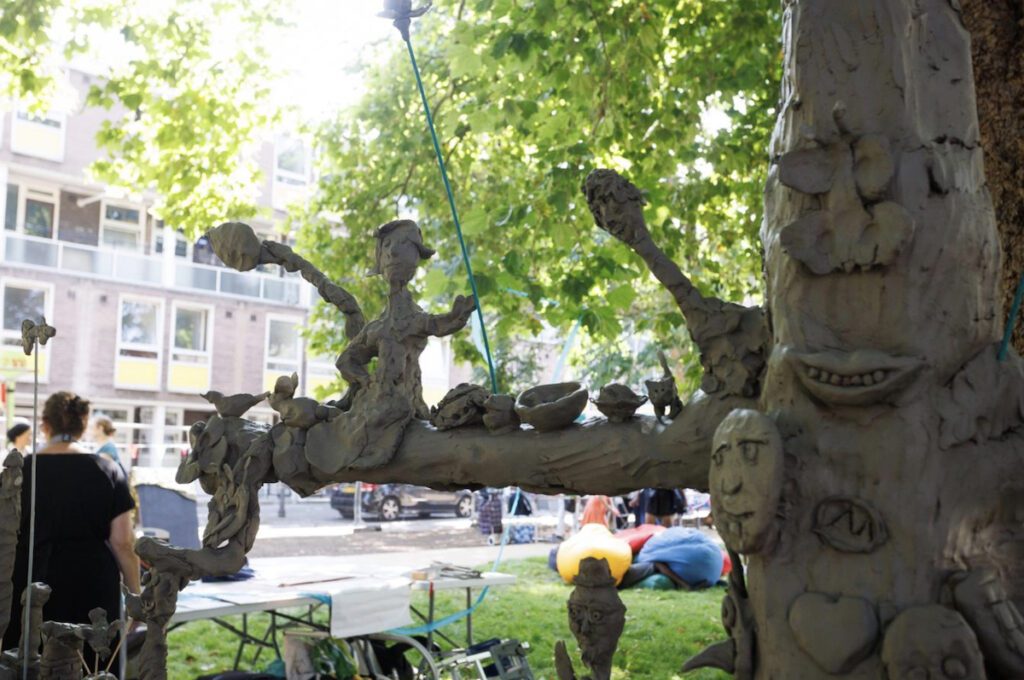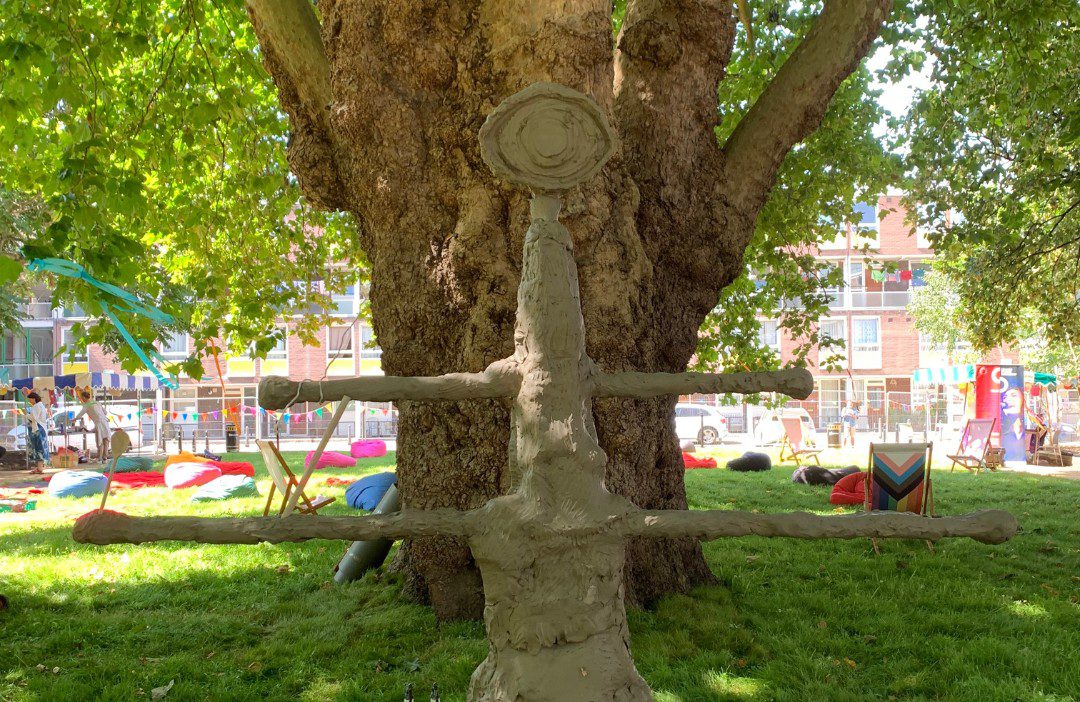With T-lab 1, experts in the field of art and culture collaborated with residents in the city of London to explore the potential of collaborative creative workshops to improve safety and conviviality. The result is a story that describes a ‘Clayground’ workshop at a community festival for practitioners and community leaders seeking community-relevant engagement.
Informed by community arts practices of the 1960s, today’s socially engaged participatory practitioners are learning about, and transforming, the world by making things together. Clayground follows in the tradition of a long line of artists and makers interested in engaging with people and doing practice in public. Through working with others, Clayground hopes to celebrate creative responses that might otherwise remain hidden, which can, in turn, improve the ways in which we do things (Rowntree & Hooson, 2018).
London’s Southbank Centre of the late 90s was a melting pot of artists and ideas, with practitioners exploring the processes and interdisciplinarity of artistic activities. Clayground was conceived at this time and represents a form of practice which seeks to: promote the value of ceramics, break down barriers, and communicate with people who have diverse perspectives and interests. By involving people in pop-up clay activities at schools, hospitals, community spaces, and the public realm, Clayground’s activities support more sustainable urban processes through the co-creation of innovative responses embodied in clay.
Clayground has been involved with T-Factor and T-Lab 1 through one of its founding members, Duncan Hooson, who also teaches BA Ceramic Design at Central St Martins, UAL. Following training and practice in ceramics, Duncan responded to the decline of ceramics as a taught subject in schools and universities, by setting out to explore, and promote, its relevance to society. His practice seeks to be site-sensitive and community-relevant and has helped to develop pathways into ceramics, and the arts, for children and adults alike. In 2013, Clayground received an award, from the Creative Skills Council, for commitment towards excellence in craft skills, success, ambition, exemplary and imaginative approaches in passing on clay skills.
The name Clayground is a take on playground and the clay beneath our feet, it gives people a chance to play together towards something meaningful. The group positions itself as a maverick, unconstrained by disciplinary silos and social barriers. People engage because clay is intuitive to work with and fun. Clayground’s events typically occupy a public space, which is filled with tables, clay, tools, and most importantly people. The clay mediates interactions, alongside skilled and engaging facilitators.
As part of the Regent’s Park Estate Festival in August 2022, T-Factor invited Duncan to take over a patch of grass under the Story Tree at Clarence Gardens. Trestle tables were set up and clay and tools brought to the gardens. Duncan and a team of fellow clay enthusiasts manned the tables and encouraged people at the event to make stories from clay, which were then placed on a story tree display.
People around Euston have been subject to years of consultation processes leaving them with fatigue and wariness. The festival at Regent’s Park Estate aimed to build confidence and hope by occupying and celebrating spaces round the estate. The act of making things in clay together and sharing stories was a small, but significant, step towards building trust. A key challenge to engaging in public is encouraging people to cross the threshold and join in, curiosity around clay and the performative nature of the activity helped people to take bold steps across the threshold.
The story tree was identified by local residents and RPCC as an important community asset. It was seen as a cathartic object related to community sadness and trauma. Clayground shared their practice of story gathering through members of the community making clay sculptures, which were then incorporated into a ceramic tree to help residents collaboratively articulate feelings without the need for words.

The role of the ceramic tree added to the success of the event by engaging a very intergenerational and diverse audience and focusing them on the meaning of the story tree. The individual clay sculptures’ incorporation into a single artifact had a tremendous impact on those attending the festival who were not actively engaged in the workshop.
KEY LEARNINGS
- Be realistic about your artistic and organisational capacity.
- Build good colleague relationships based on shared values, different expertise and a willingness to be challenged.
- Consider each workshop as a performance from beginning to end ß.
- Build on opportunities for creative celebration to bring communities together across generations, cultures and skills.
Rowntree, J., & Hooson, D. (2018). Clay in Common: A Project Book for Schools, Museums, Galleries, Libraries and Artists and Clay Activists Everywhere. Triarchy Press. https://books.google.co.uk/books?id=bJ22tQEACAAJ
- Arts, Culture & Heritage
- Safe & Convivial Streets and Squares
